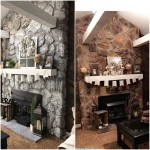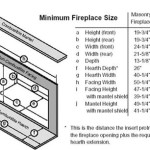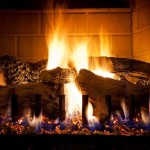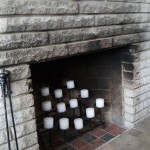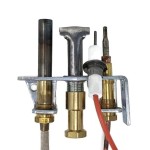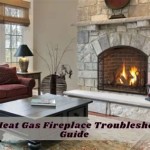Free-Standing Gas Fireplace Stoves: Ventless Options and Considerations
Free-standing gas fireplace stoves offer a convenient and attractive way to enhance the ambiance and warmth of a living space. Among the various types available, ventless gas fireplace stoves present a unique solution for homeowners seeking a fireplace experience without the need for traditional venting systems. These stoves operate by releasing combustion byproducts into the room, making their installation and usage subject to specific regulations and considerations. This article will delve into the key aspects of ventless gas fireplace stoves, exploring their features, benefits, drawbacks, and installation guidelines.
Features and Operation of Ventless Gas Fireplace Stoves
Ventless gas fireplace stoves are characterized by their compact size, freestanding design, and self-contained combustion system. These stoves typically feature a realistic flame display using a combination of natural gas or propane and a ceramic log set. The heart of the stove lies in its sealed combustion chamber, where the fuel is burned. Unlike traditional vented fireplaces, ventless models do not require a chimney or vent to exhaust the combustion byproducts. Instead, these byproducts are released directly into the room after undergoing a process of filtration and purification.
The purification process involves passing the combustion gases through a catalytic converter, which breaks down harmful pollutants like carbon monoxide and particulate matter. However, it's important to note that ventless stoves are not completely emission-free. Although the emissions are significantly reduced compared to traditional fireplaces, they are still released into the room's air. As such, proper ventilation and air circulation are crucial for ensuring safe and comfortable use.
Benefits of Ventless Gas Fireplace Stoves
Ventless gas fireplace stoves offer several advantages over their traditional counterparts, making them an attractive option for many homeowners:
- Easy Installation: Ventless stoves eliminate the need for complex chimney installations, simplifying the setup process. As long as the necessary gas and electrical connections are available, these stoves can be easily installed in various locations within the home.
- Cost-Effective: Ventless stoves generally have lower installation costs due to the absence of venting requirements. They also offer potential energy savings compared to traditional fireplaces.
- Aesthetic Appeal: Ventless stoves come in a variety of styles and designs, blending seamlessly with different home decor aesthetics. Their compact size allows them to be placed in smaller spaces.
- Convenience: Ventless stoves offer a convenient and readily available source of heat. They can be quickly turned on and off, providing instant warmth without the hassle of building a fire.
Drawbacks and Considerations of Ventless Gas Fireplace Stoves
Despite their benefits, ventless gas fireplace stoves have certain drawbacks and considerations that homeowners should carefully evaluate before making a purchase:
- Emission Concerns: While ventless stoves reduce emissions, they still release a small amount of combustion byproducts into the room. This can lead to air quality concerns, especially in poorly ventilated areas.
- Limited Heating Capacity: Ventless stoves generally have a lower heating capacity compared to vented models. They are best suited for supplemental heating rather than providing primary heat for a large space.
- Regulatory Requirements: Ventless stoves are subject to stringent regulations due to their emissions. Homeowners should ensure their stove meets local and regional safety standards and that they obtain necessary permits and inspections.
- Proper Ventilation: Adequate ventilation is crucial for safe and effective operation of ventless stoves. This includes ensuring sufficient air circulation and the presence of a reliable source of fresh air.
- Safety Considerations: Ventless stoves require regular maintenance and careful operation to ensure safe use. It's important to follow the manufacturer's instructions and to keep the stove area clear of flammable materials.
Installation and Maintenance of Ventless Gas Fireplace Stoves
The installation of a ventless gas fireplace stove typically involves the following steps:
- Professional Installation: It is highly recommended to consult with a qualified and licensed gas appliance installer for the installation of a ventless stove. They will ensure that the stove is properly connected to the gas supply, vented to the outside, and meets local building codes and safety standards.
- Gas Line Connection: The stove needs to be connected to a dedicated gas line with the appropriate pressure and flow rate. This may involve installing a new gas line or tapping into an existing line. The installer will ensure that the gas line is properly sealed and meets all safety regulations.
- Electrical Connections: Ventless stoves typically require a standard electrical outlet for operation. The installer will ensure that the electrical wiring is properly connected and conforms to local electrical codes.
- Proper Venting: While these stoves are ventless, they still require adequate ventilation to ensure safe and effective operation. This typically involves ensuring sufficient air circulation and the presence of a reliable source of fresh air.
Regular maintenance is crucial for maintaining the efficiency and safety of a ventless gas fireplace stove. This involves:
- Annual Inspection: Have a qualified technician inspect the stove annually to ensure that it is functioning correctly and safely. This includes checking the gas line connection, burner operation, catalytic converter, and overall condition of the stove.
- Cleaning: Clean the glass door, firebox, and burner area regularly to prevent buildup of soot and debris. This will ensure efficient heat transfer and maintain the aesthetic appeal of the stove.
- Replace Parts: Replace any damaged or worn-out parts as recommended by the manufacturer. This includes the catalytic converter, burner, and other components that can experience wear and tear over time.
By following these installation and maintenance guidelines, homeowners can ensure the safe and efficient operation of their ventless gas fireplace stoves for many years to come.

Empire Vent Free Stove Bedroom Approved Fine S Gas

Radiance Vent Free Gas Stove The Place

50 Free Standing Ventless Gas Fireplace Visualhunt

50 Free Standing Ventless Gas Fireplace Visualhunt

Free Standing Gas Stoves Hearth And Home Pe

Allen Roth 1000 Sq Ft Dual Burner Vent Free Freestanding Natural And Liquid Propane Gas Stove At Com

How To Install A Free Standing Gas Fireplace Modern Stove Ventless Propane Corner Decor

50 Free Standing Ventless Gas Fireplace Visualhunt

Comparing Vent Free Gas Stoves Project Small House

Star Vent Free Gas Stove The Place
Related Posts


